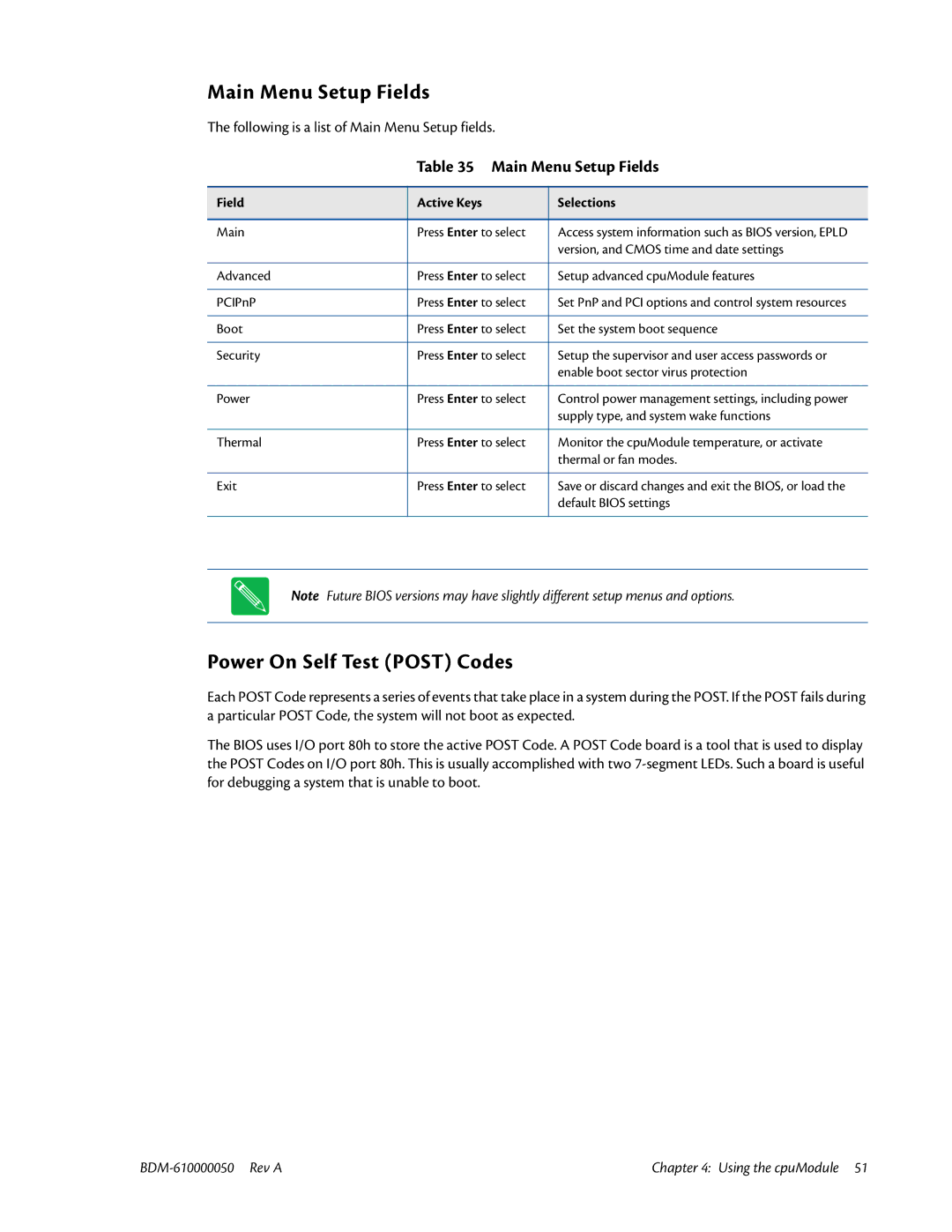Main Menu Setup Fields
The following is a list of Main Menu Setup fields.
Table 35 Main Menu Setup Fields
Field | Active Keys | Selections |
|
|
|
Main | Press Enter to select | Access system information such as BIOS version, EPLD |
|
| version, and CMOS time and date settings |
|
|
|
Advanced | Press Enter to select | Setup advanced cpuModule features |
|
|
|
PCIPnP | Press Enter to select | Set PnP and PCI options and control system resources |
|
|
|
Boot | Press Enter to select | Set the system boot sequence |
|
|
|
Security | Press Enter to select | Setup the supervisor and user access passwords or |
|
| enable boot sector virus protection |
|
|
|
Power | Press Enter to select | Control power management settings, including power |
|
| supply type, and system wake functions |
|
|
|
Thermal | Press Enter to select | Monitor the cpuModule temperature, or activate |
|
| thermal or fan modes. |
|
|
|
Exit | Press Enter to select | Save or discard changes and exit the BIOS, or load the |
|
| default BIOS settings |
|
|
|
Note Future BIOS versions may have slightly different setup menus and options.
Power On Self Test (POST) Codes
Each POST Code represents a series of events that take place in a system during the POST. If the POST fails during a particular POST Code, the system will not boot as expected.
The BIOS uses I/O port 80h to store the active POST Code. A POST Code board is a tool that is used to display the POST Codes on I/O port 80h. This is usually accomplished with two
Chapter 4: Using the cpuModule 51 |
